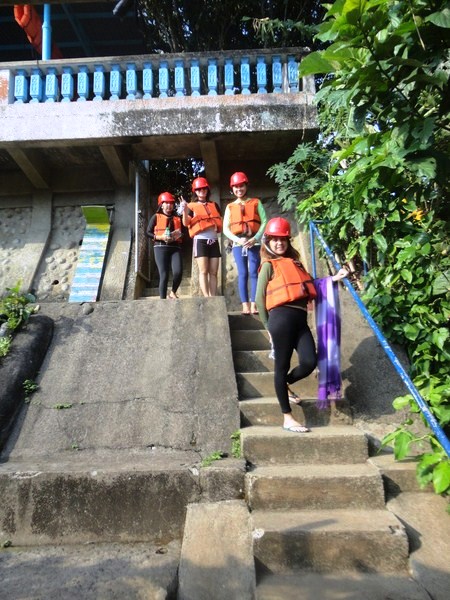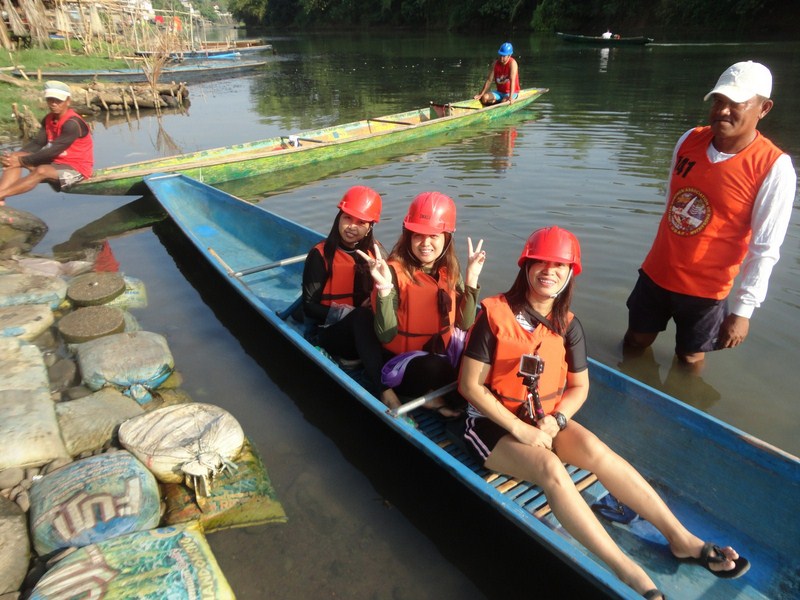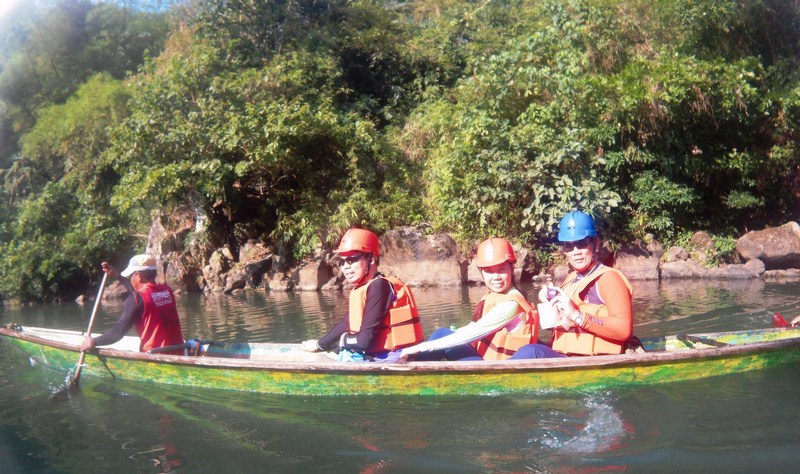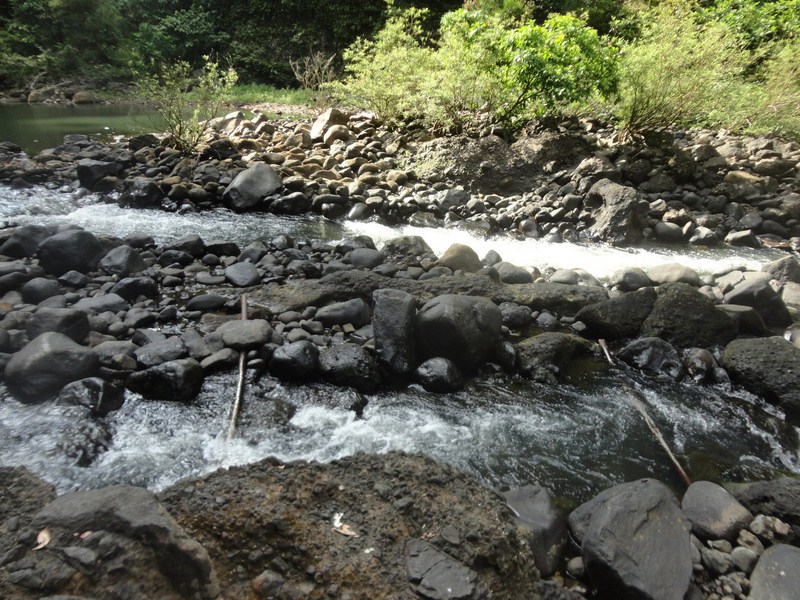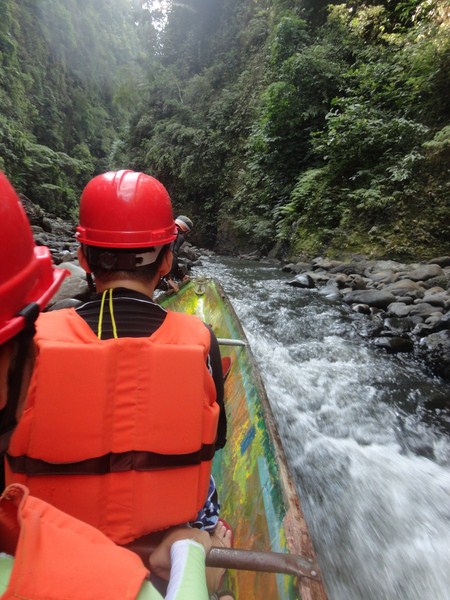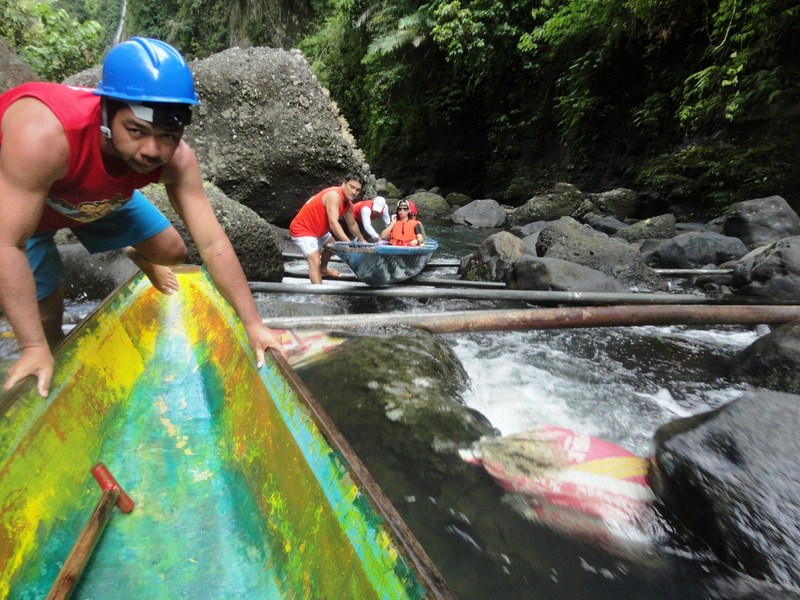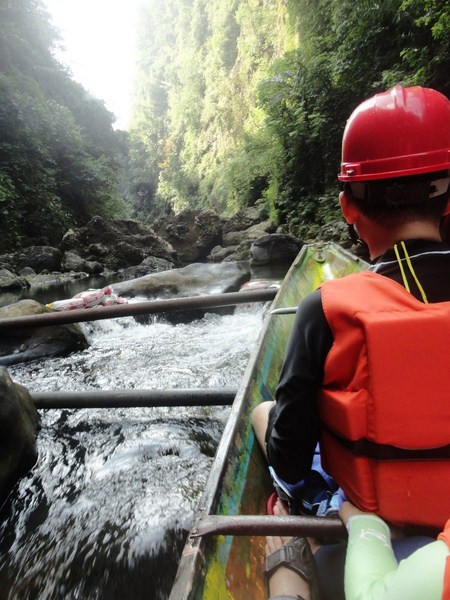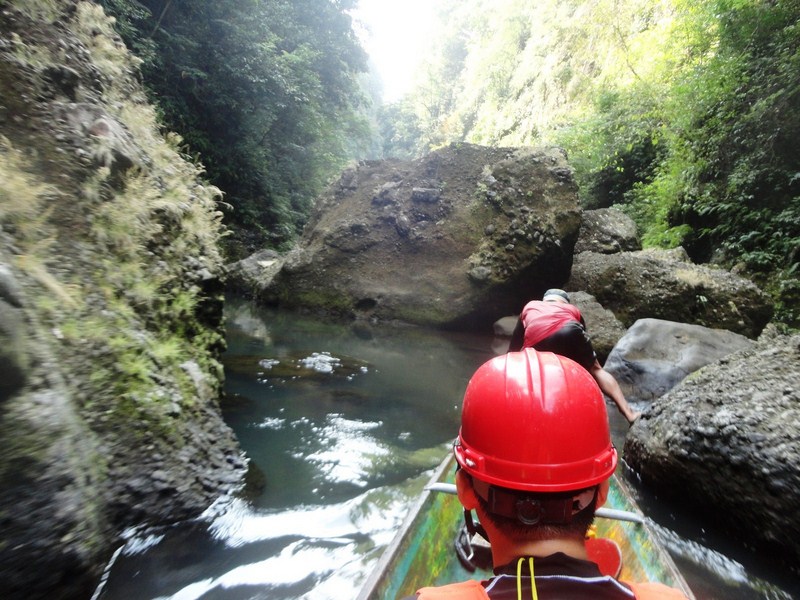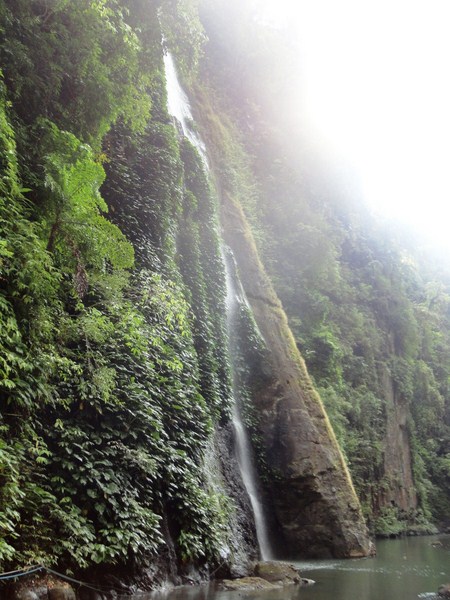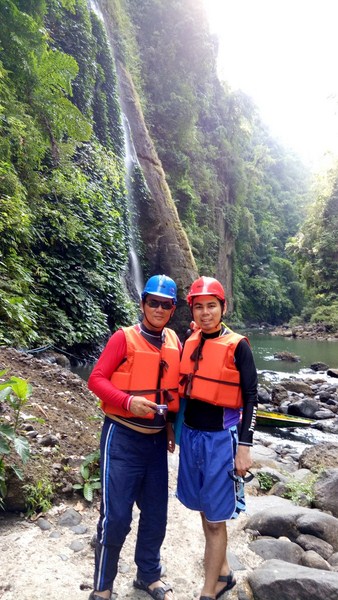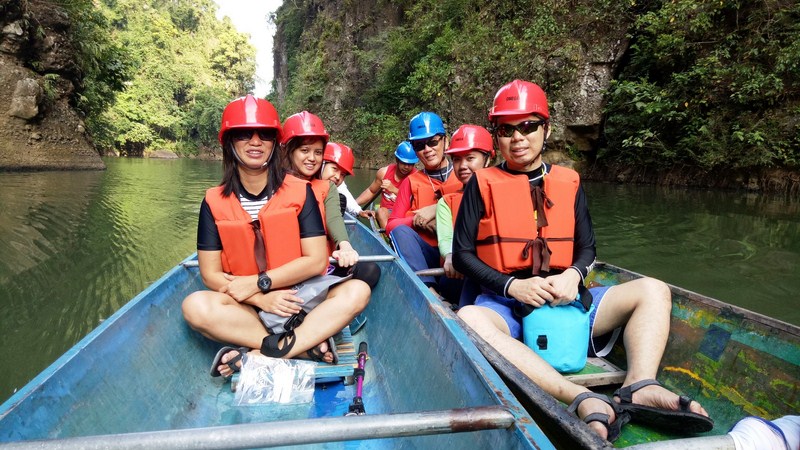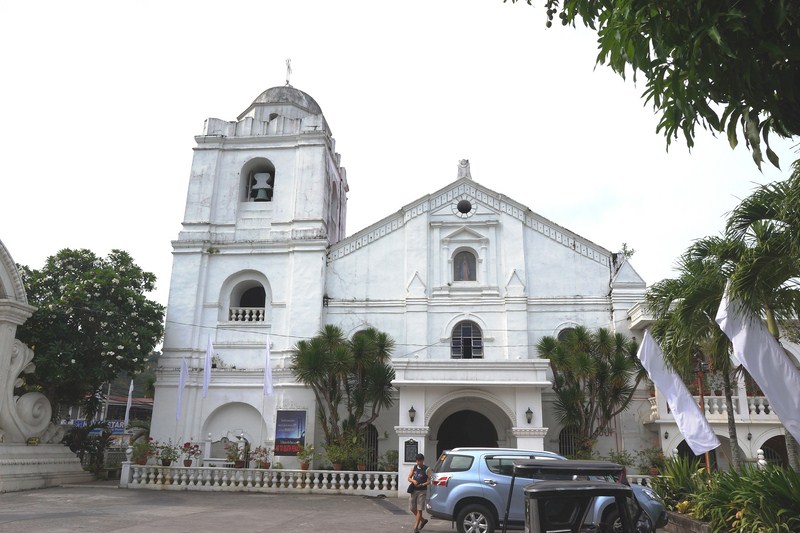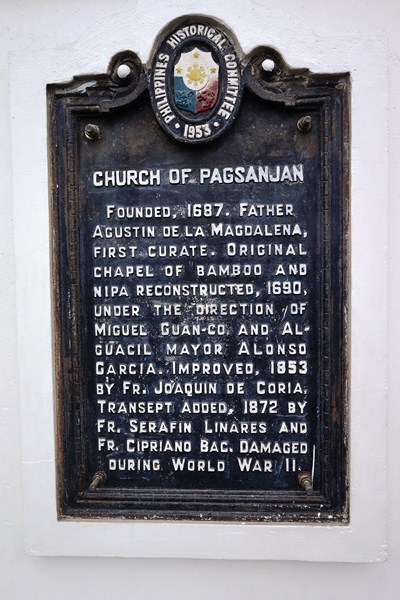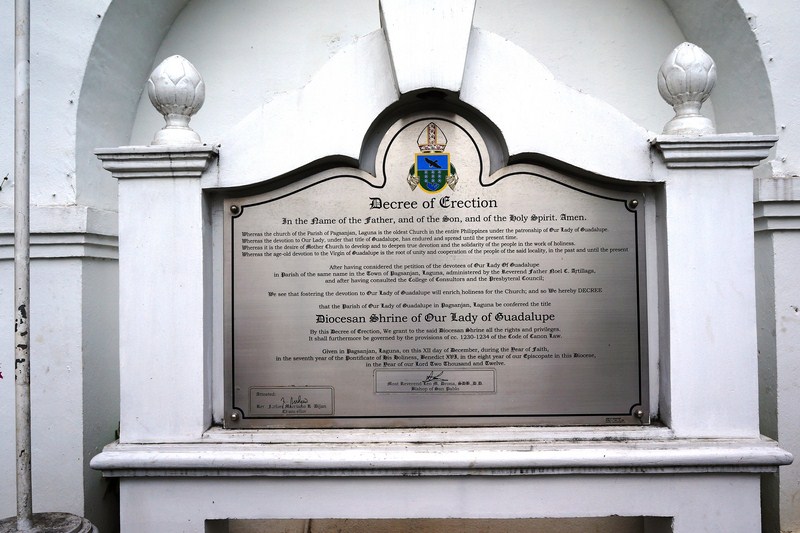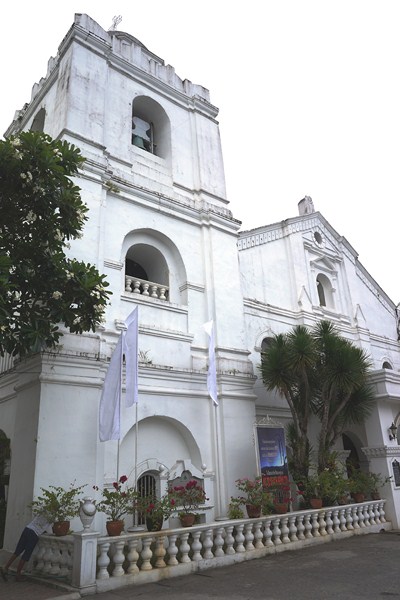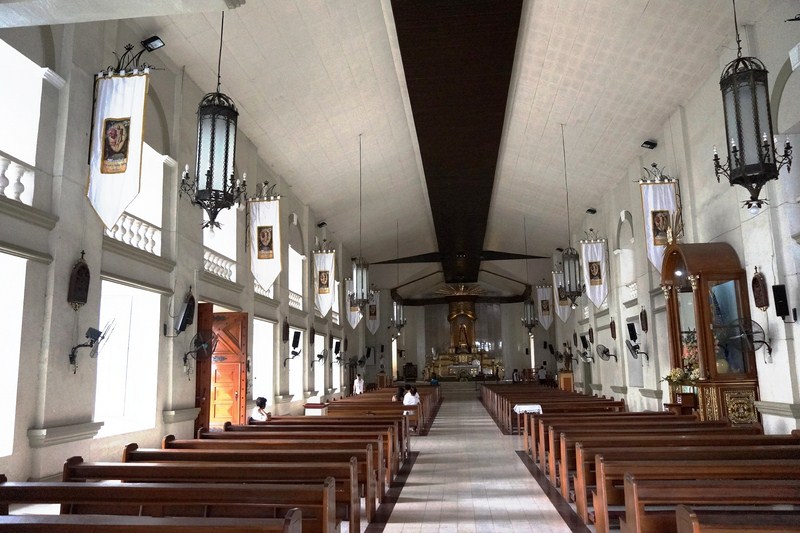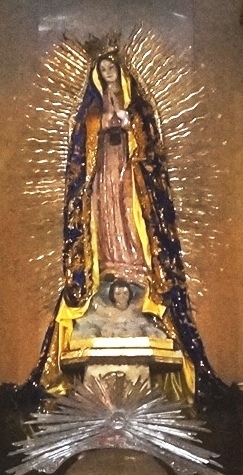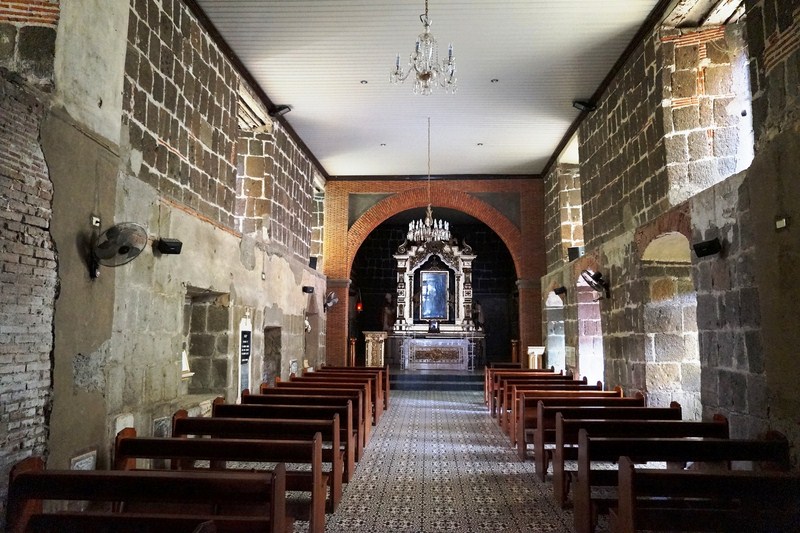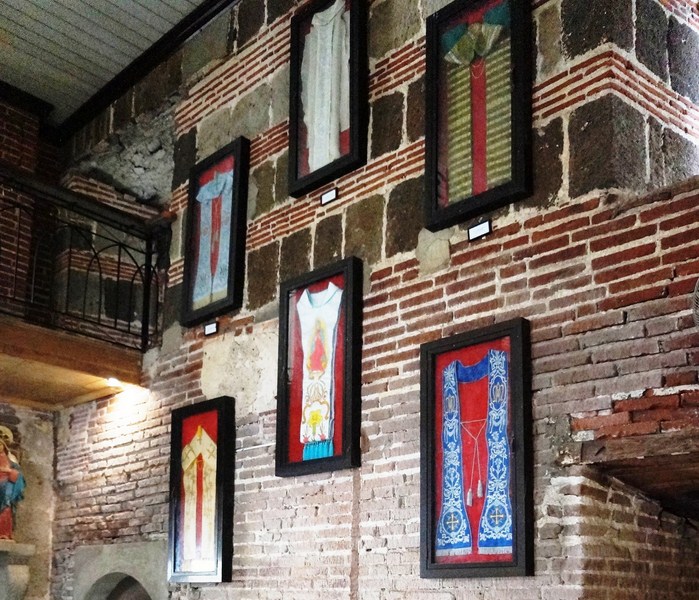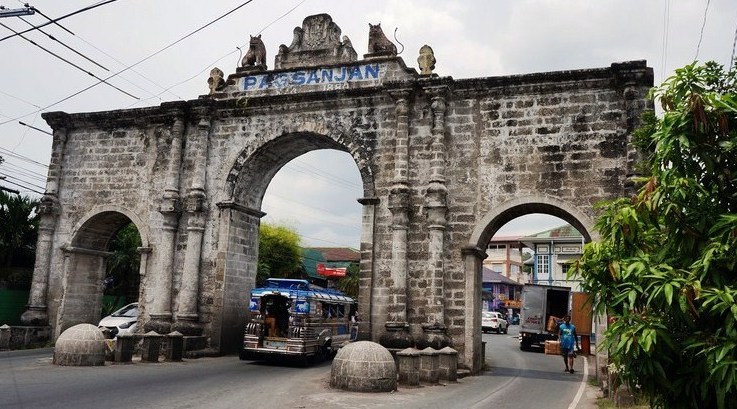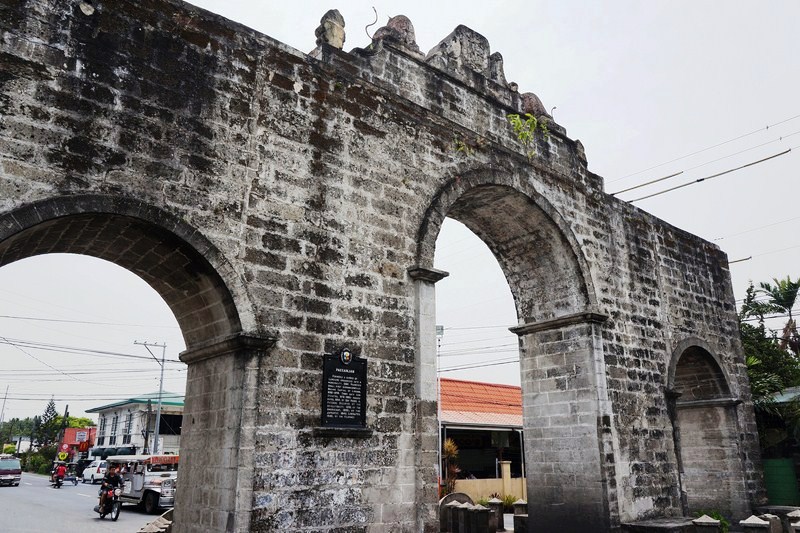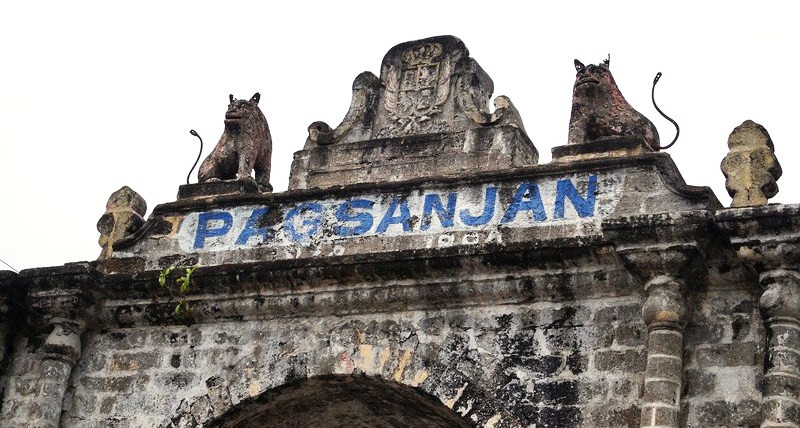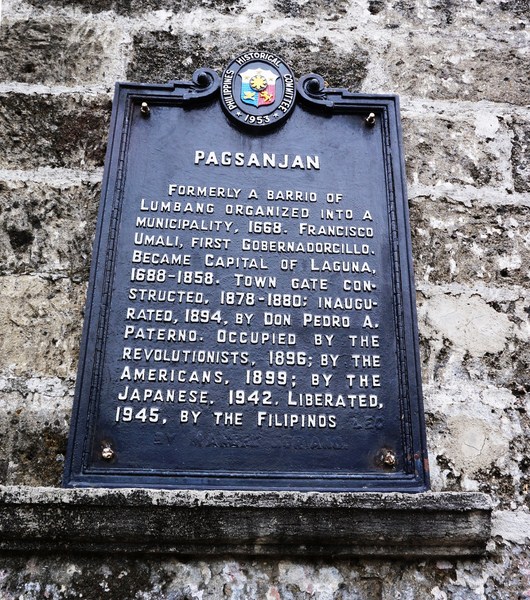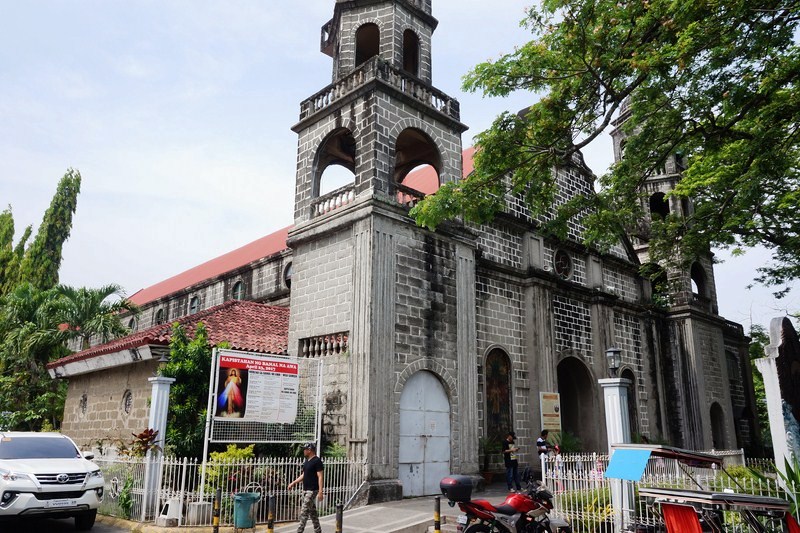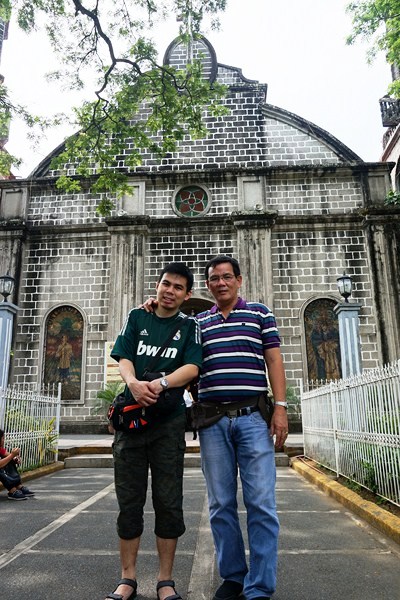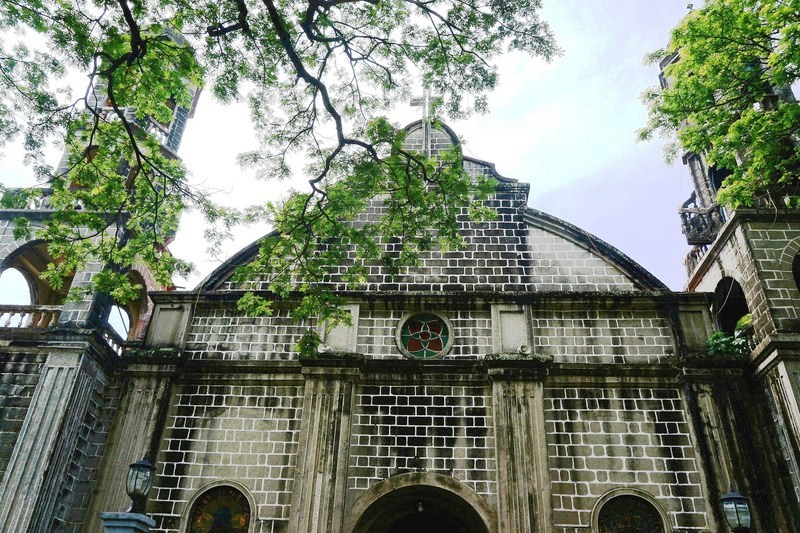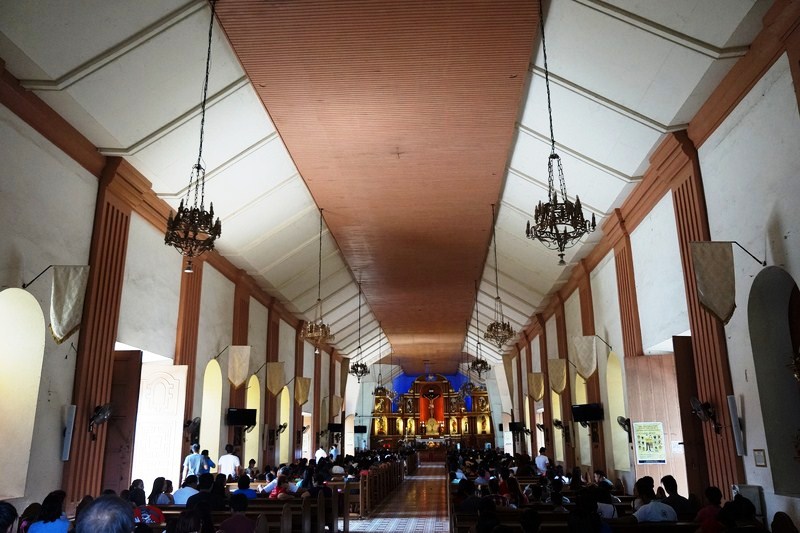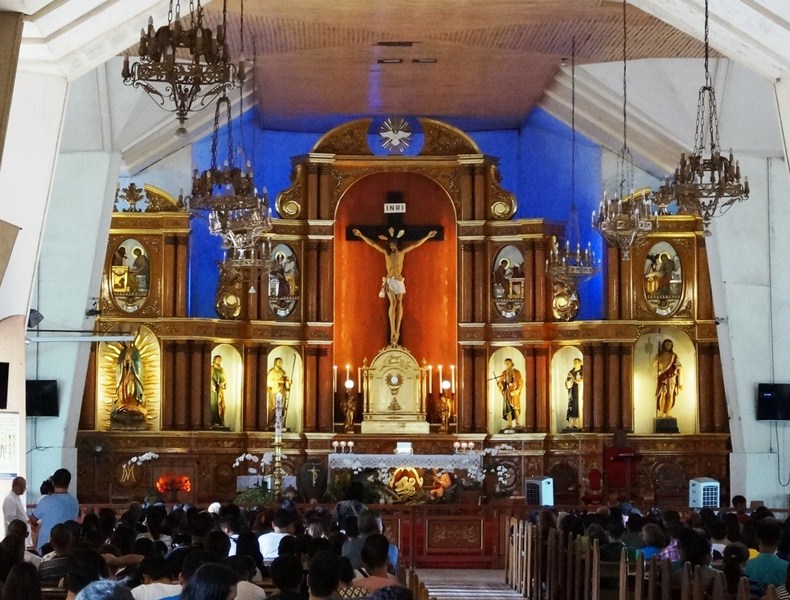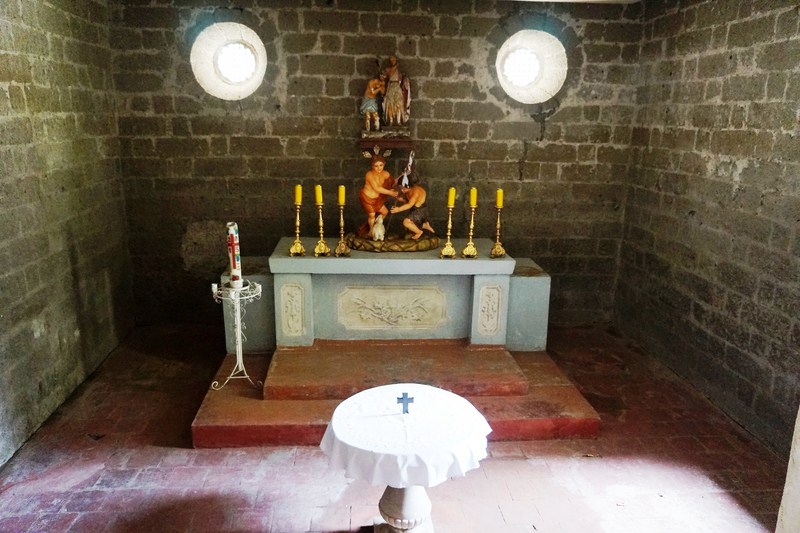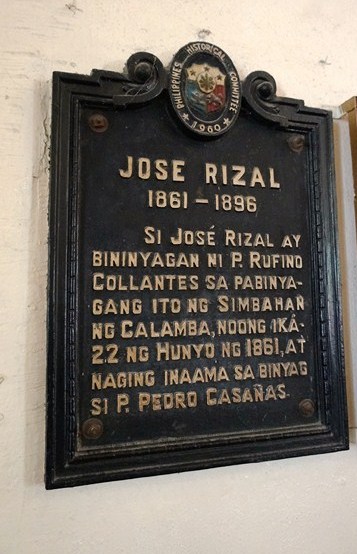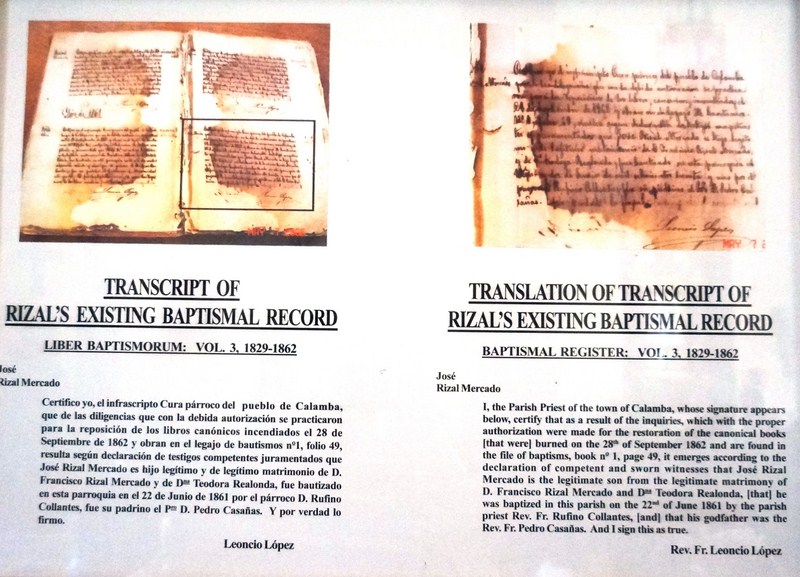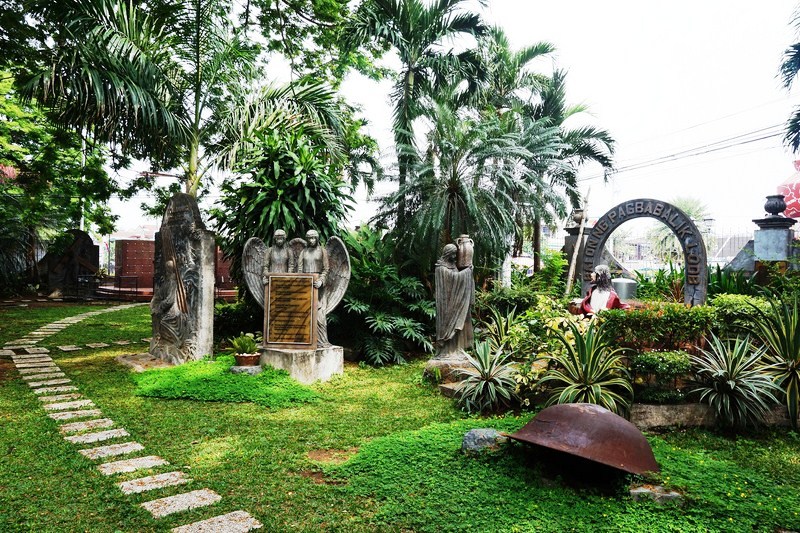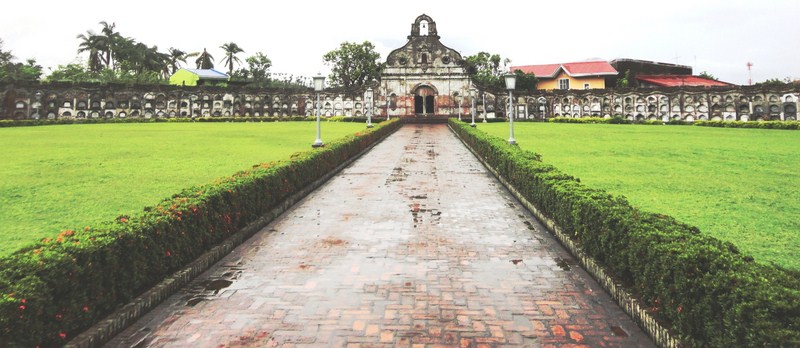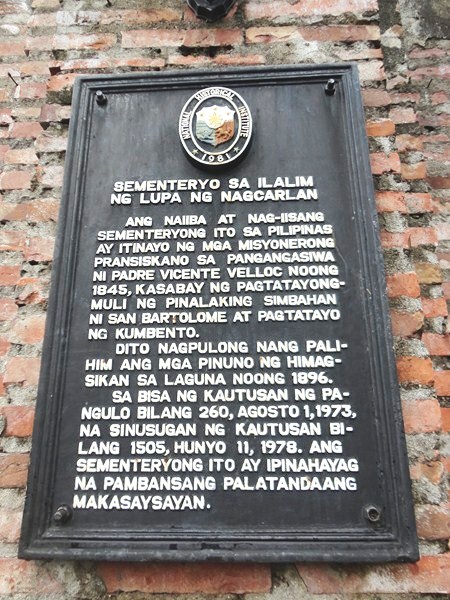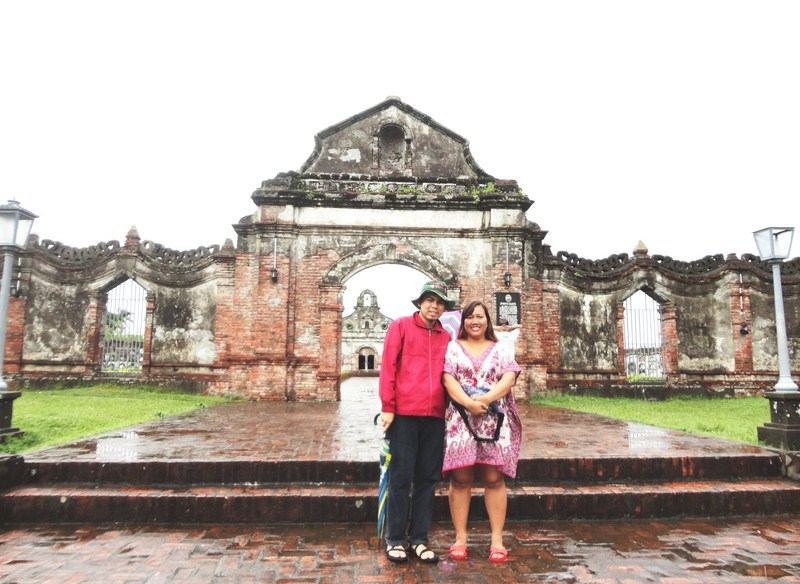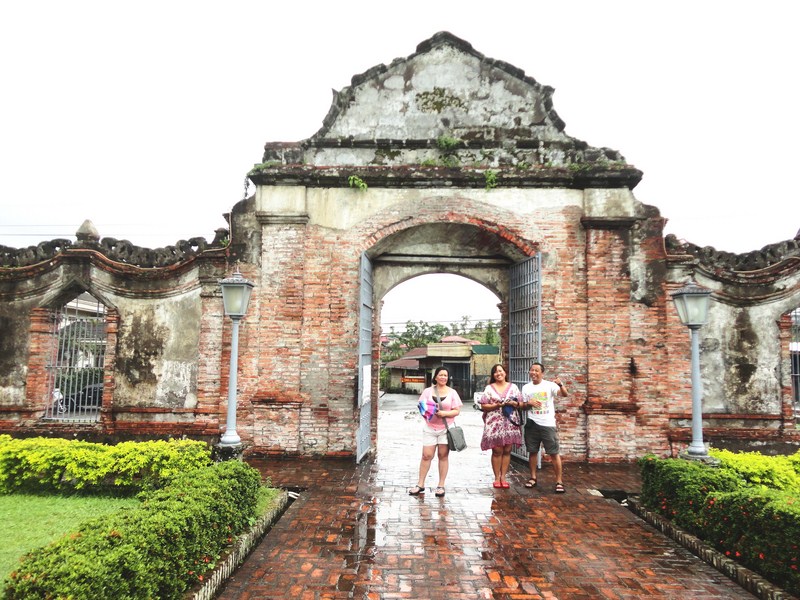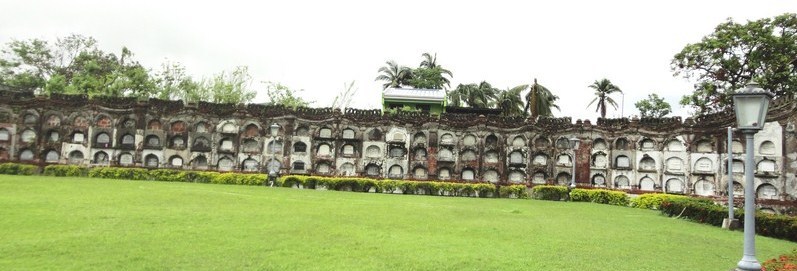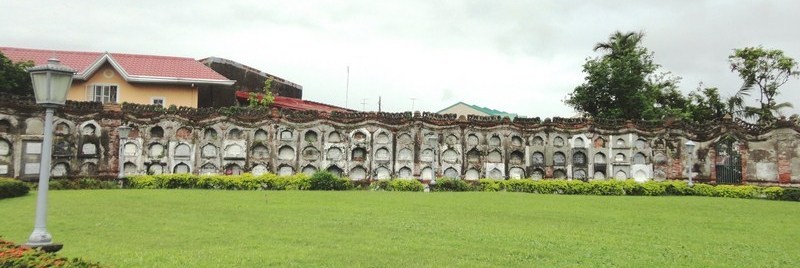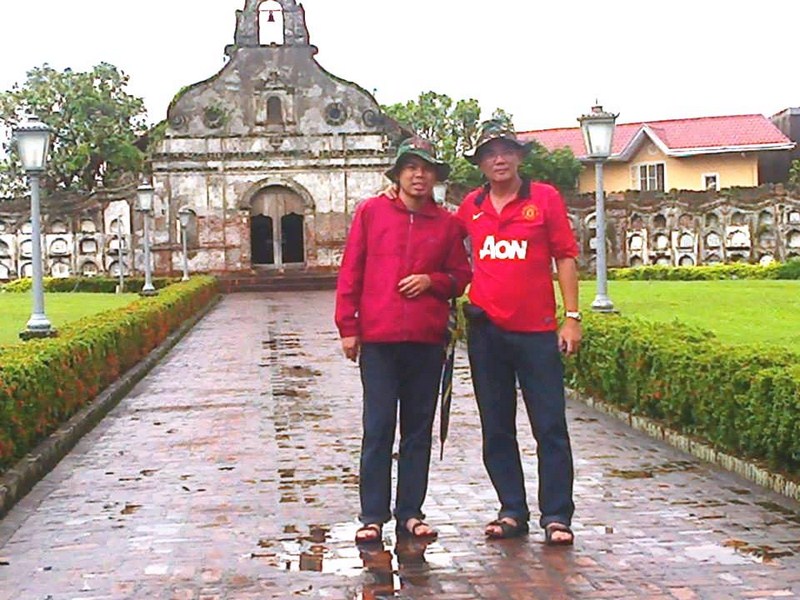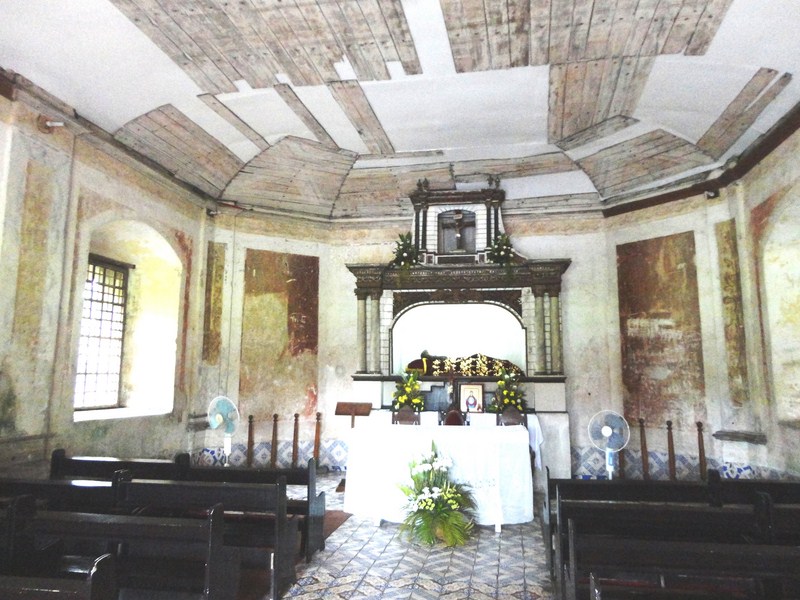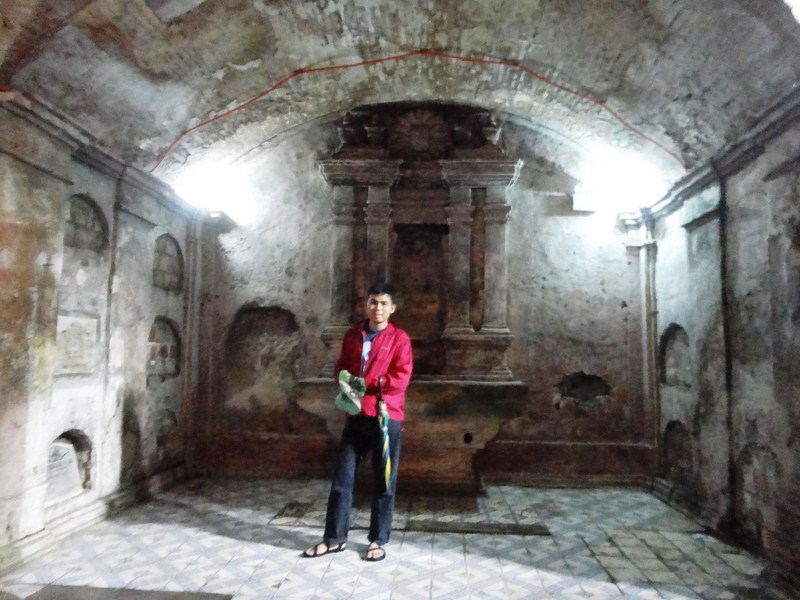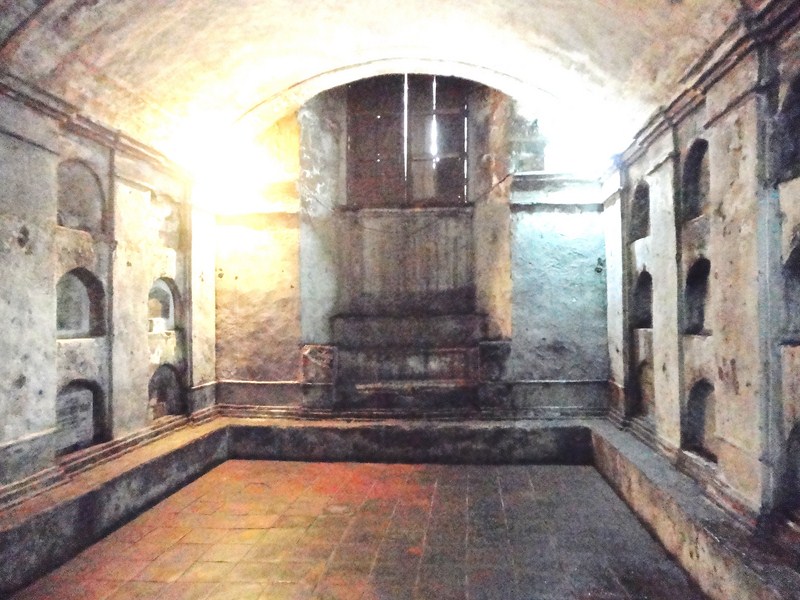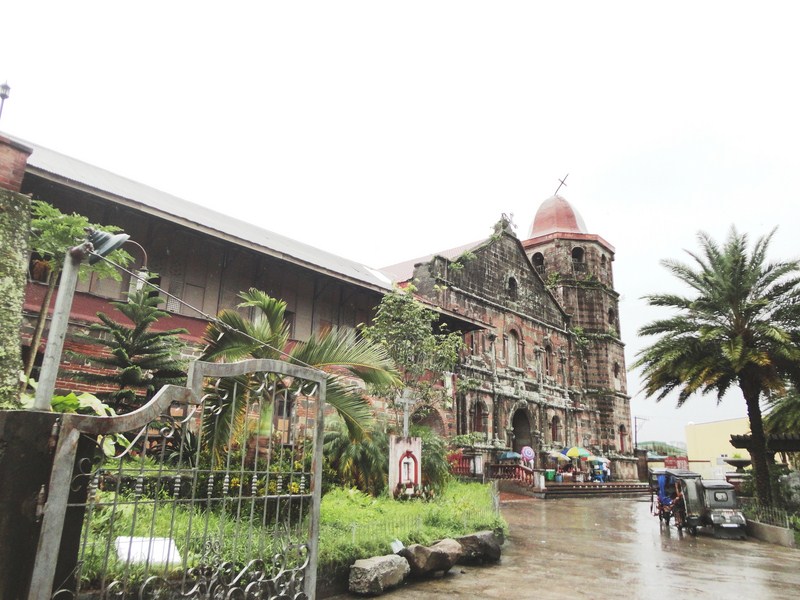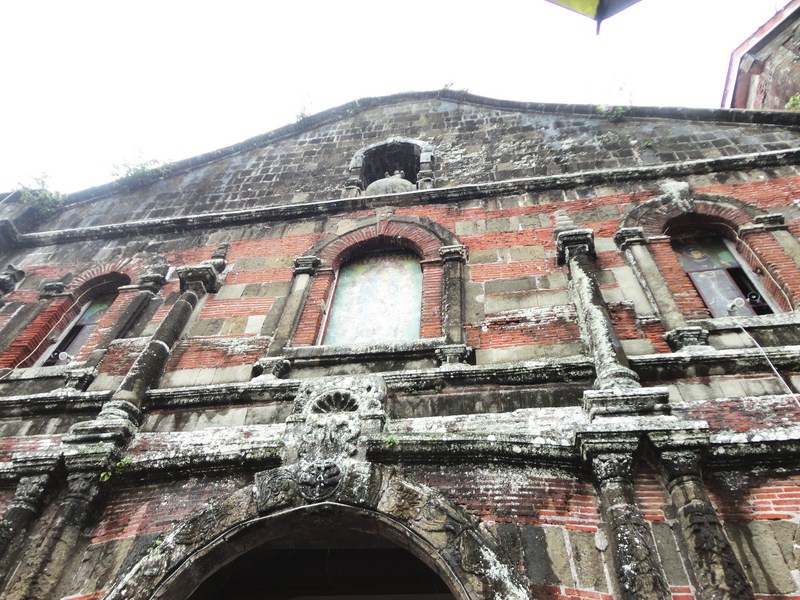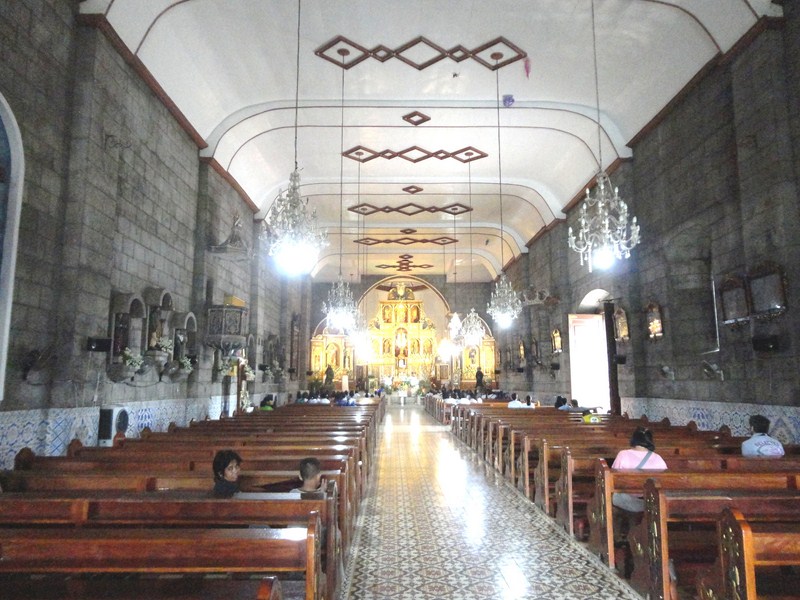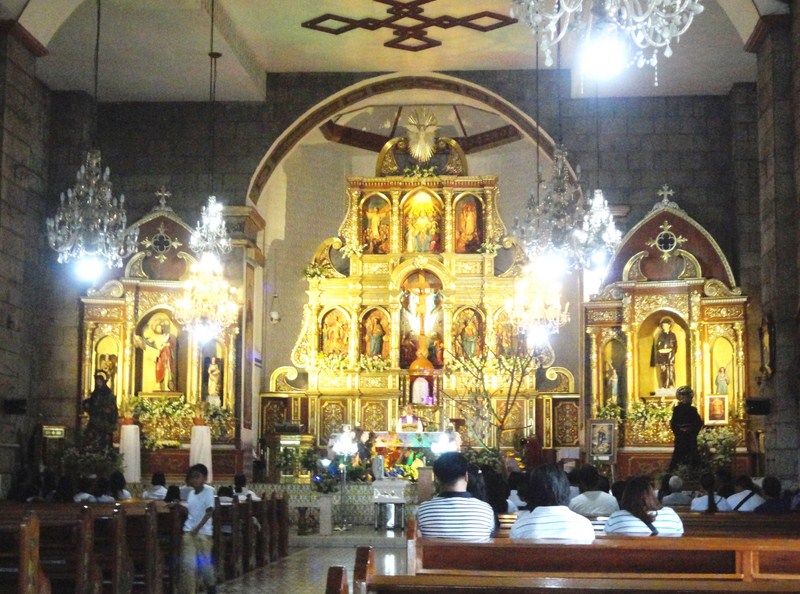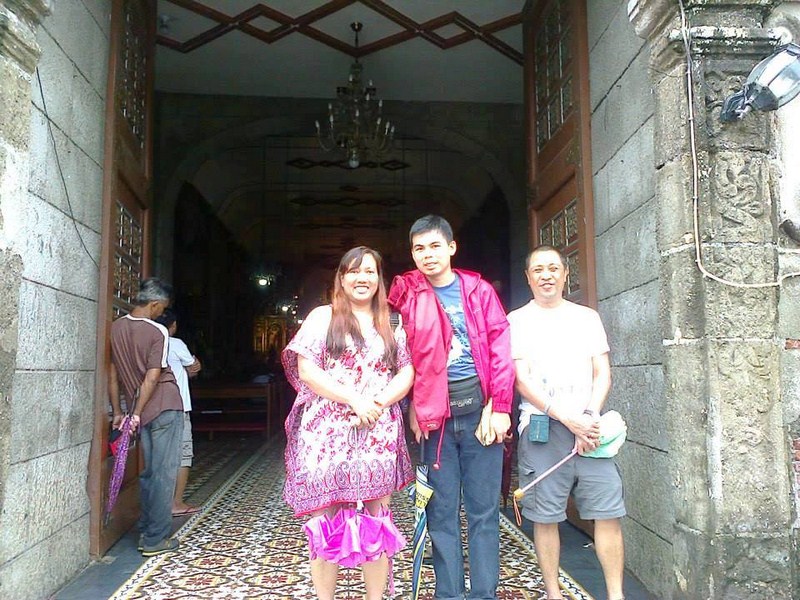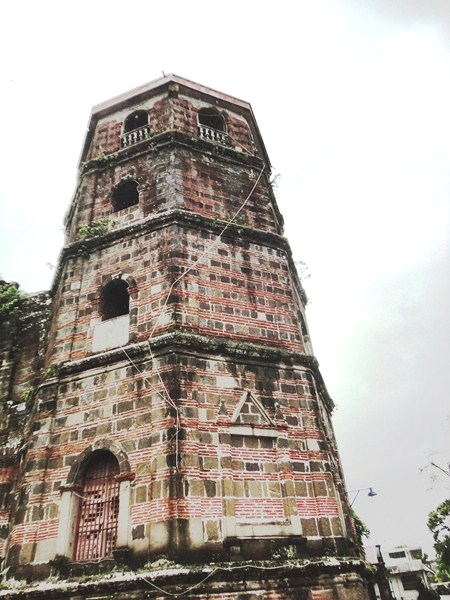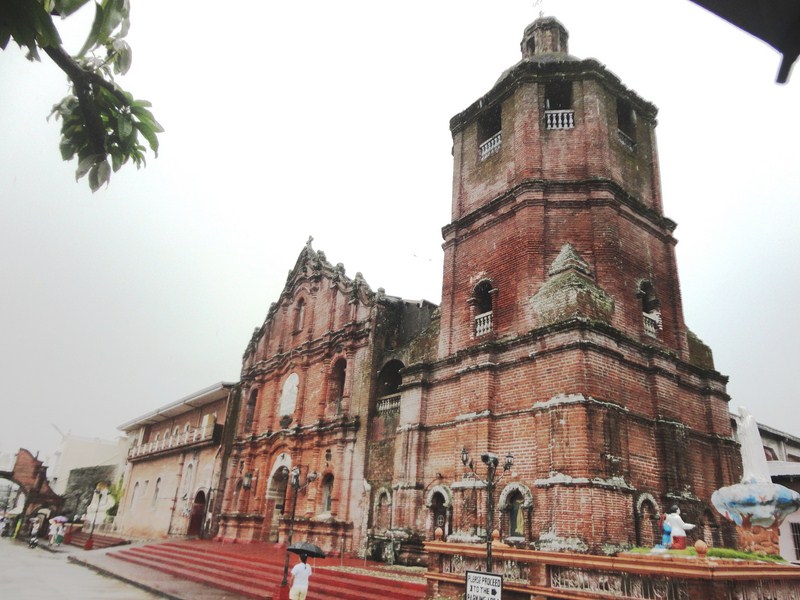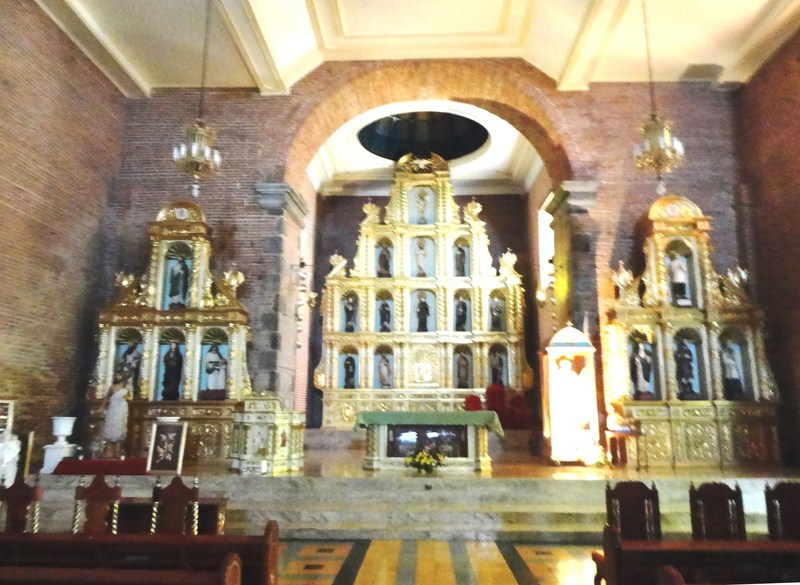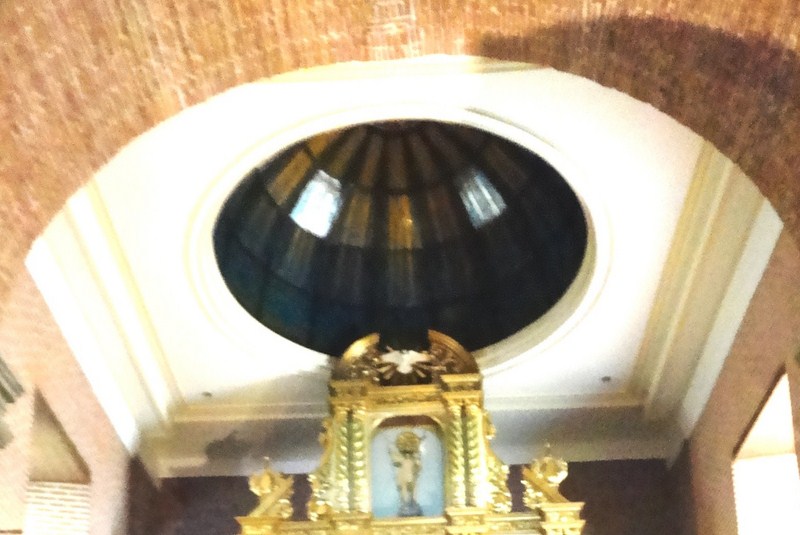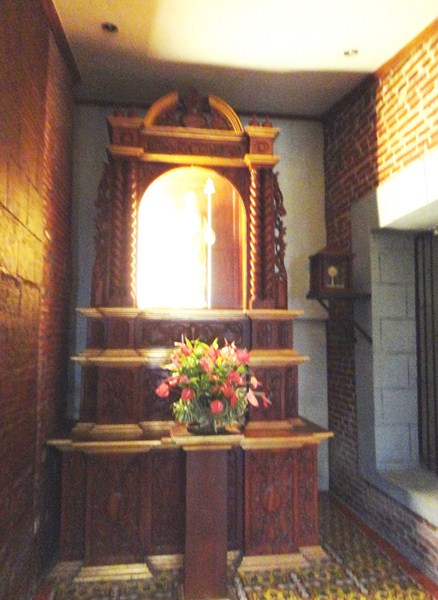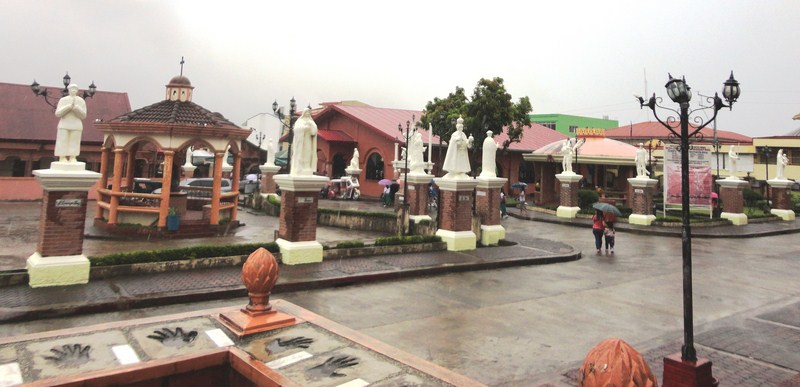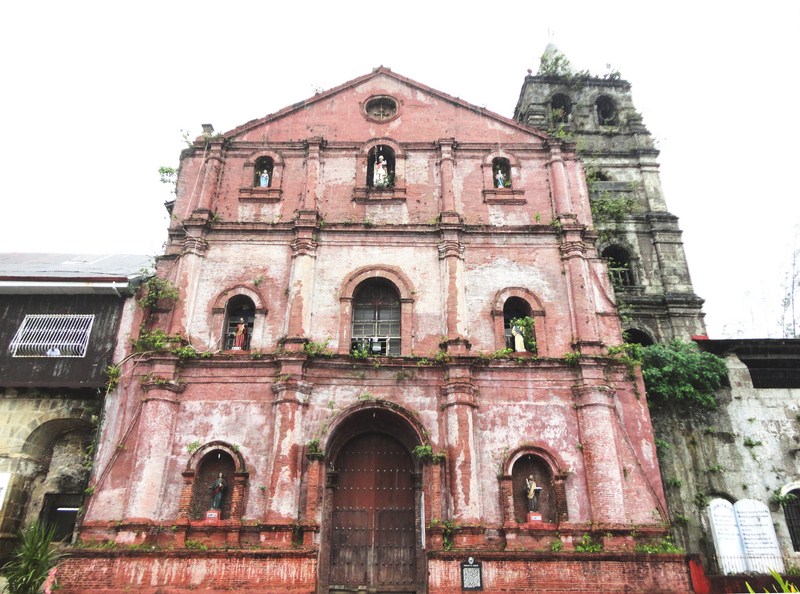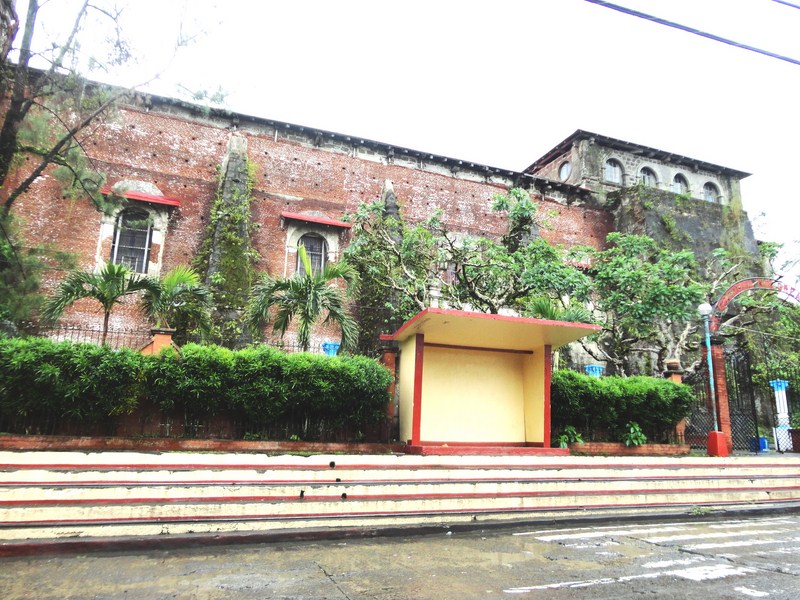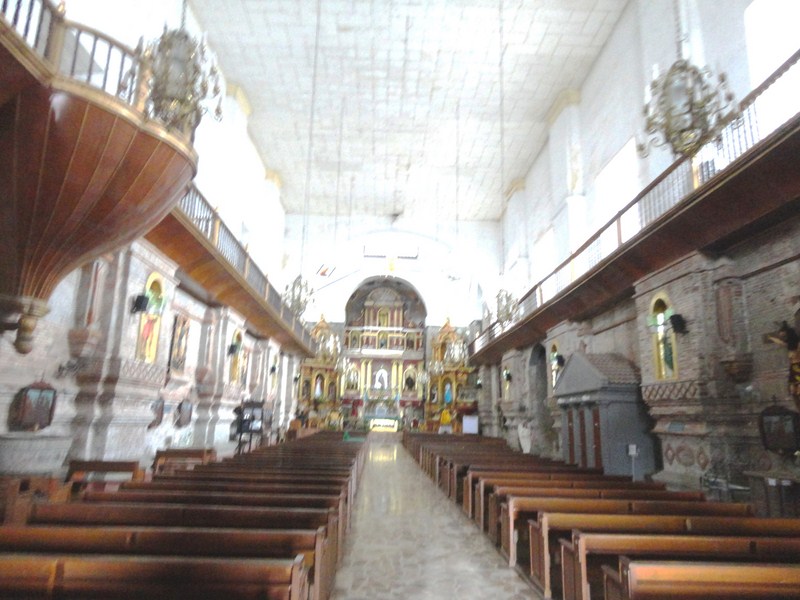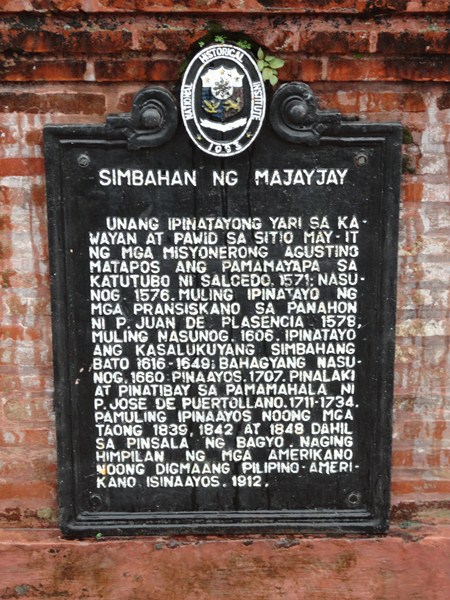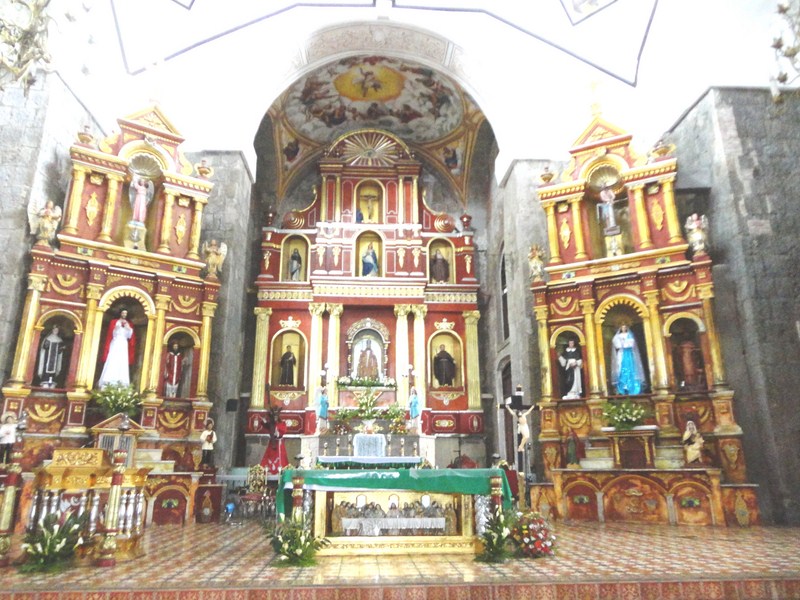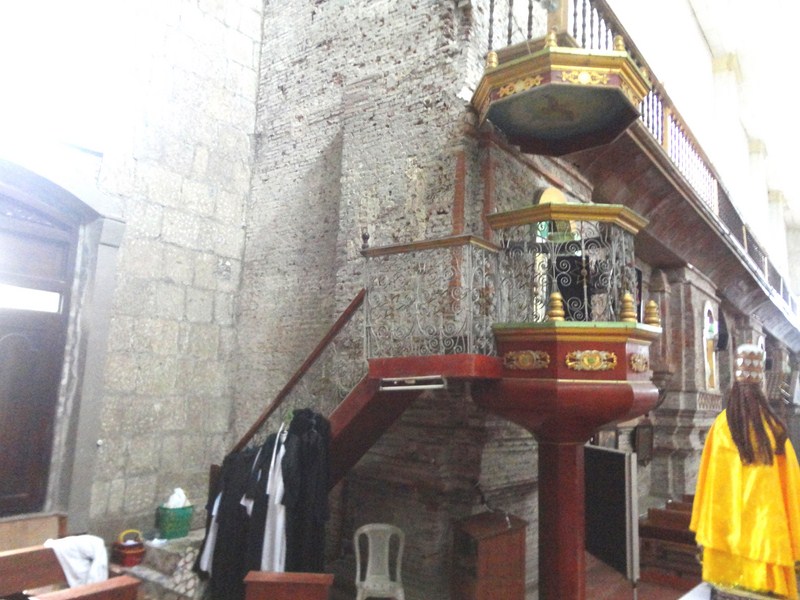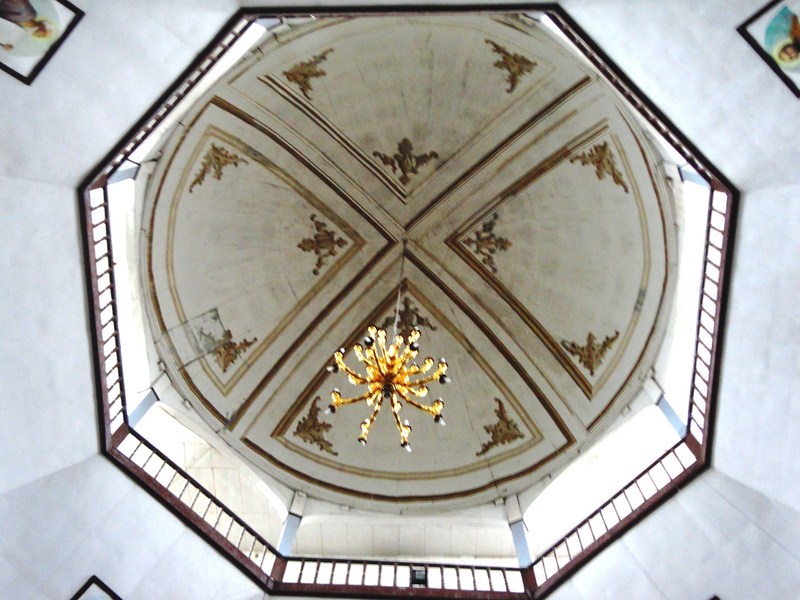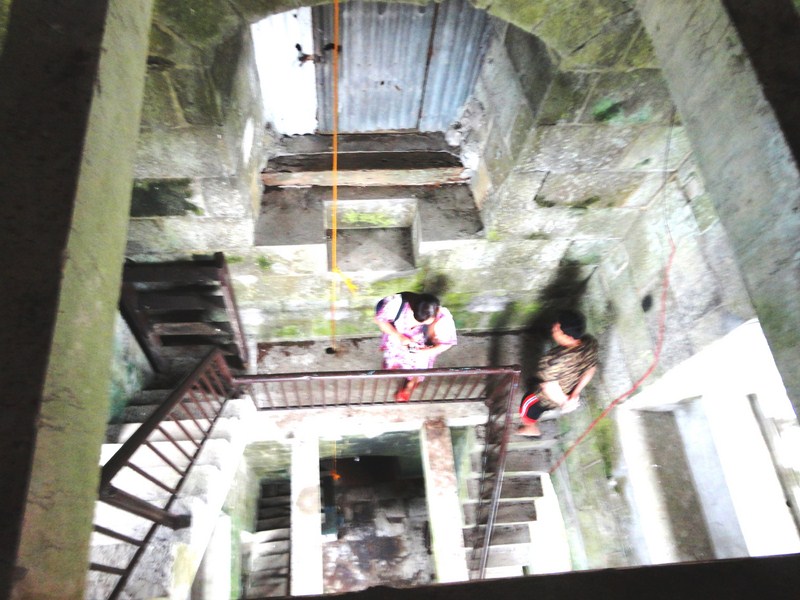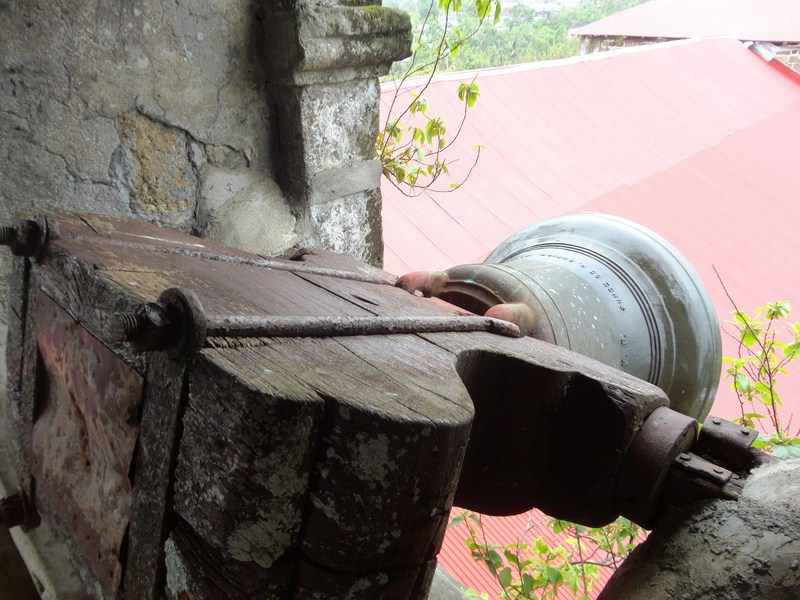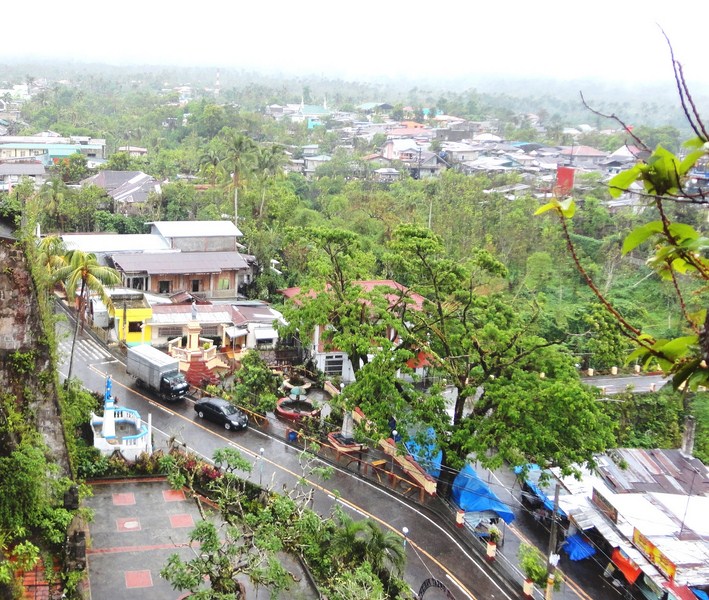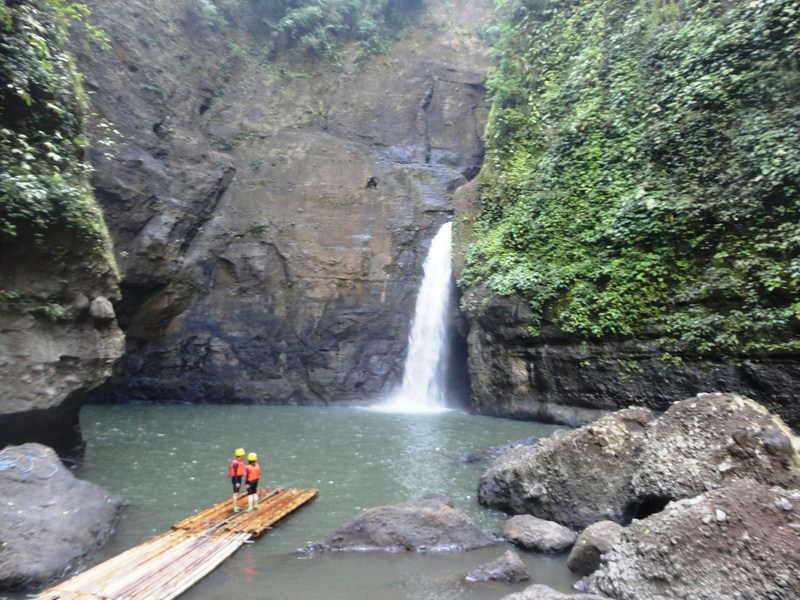
Pagsanjan Falls (see video)
The next day, after breakfast at our apartel, Jessica, Desiree, Ann, Joy, Jandy and I, with our guide Mr. Ramon Cabelo (retired municipal tourism officer), made our way to boat landing at Casa Chiesa for our “shooting the rapids” boat trip to Pagsanjan Falls, the star attraction of Laguna province. The site is under the supervision of the Parks and Wildlife Office of the Bureau of Forest Development.
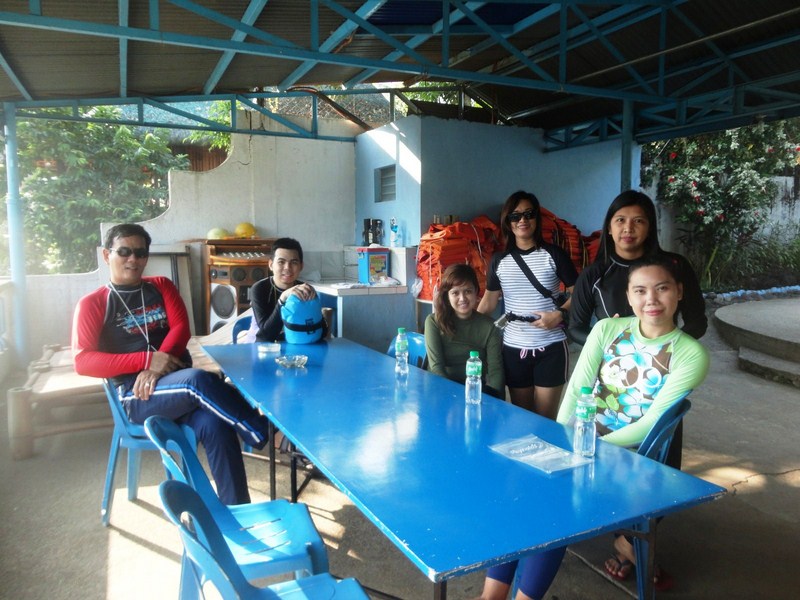
Waiting for our boat ride at Casa Chiesa. L-R: the author, son Jandy Layug, Ms. Jessica Bez, Ms. Joy Tenedero, Ms. Julie Ann Zafe and Ms. Desiree Benitez
The falls is actually located at the rugged highlands of Brgy. Anglas in Cavinti, 3 miles outside Pagsanjan town, where it is called Magdapio Falls. However, the only passable route to it is the Bumbungan River of Pagsanjan. Pagsanjan Falls drops water from Cavinti River which is crossed by the overflow spillway on the road going to Lumot. Facing upstream, the left bank of the river belongs to Lumban and the right bank belongs to Cavinti.
The legend of Pagsanjan Falls:
According to legend, there was only the river and no falls. There were two brothers, Balubad and Magadapio, who lived by the river. One day, the river dried up, the land dried up and plants and trees died. Balubad, the weaker of the two brothers, eventually died. He was buried near the mouth of the lake at the foot of the mountain (now called Balubad). In his thirst, Magdapio went up the gorge with his bamboo stick to survey the area. Finding it dry, he cried out in anger, hurling the stick at the rocks. Water soon gushed from where the stick struck the ground and soon flowed in a torrent forming the falls. Magdapio fell on his knees and thanked the Lord. He drank the cool waters and regained his strength.
The first written account of a trip to the falls was written by American trader Joseph E. Stevens from Boston who made the trip on March 22, 1894, Holy Thursday.
We decided to “shoot the rapids” early morning to avoid the rush of excursionists from Manila. The boat ride fee comes up PhP1,250 per passenger (includes personal injury insurance, hospitalization insurance, expenses for the helmet, life jacket, seat cushion, and a Cavinti entrance fee of P250 which entails a bamboo raft ride), with a maximum of three passengers per boat.
We were all required to wear life vests and a sports helmet or hard hat as the boat sometimes moves close to big rocks which your head might hit. Also, falling objects, such as small stones, may fall down from atop the gorge. Our boats were provided with seat cushions for our seating comfort. The boat had no outrigger so getting into our boat required balance.
Joy, Jessica and Ann rode on the first boat, with bankeros (boatmen) Russel Abary and Jeffrey Leron, while Jandy, Desiree and I rode the second with Antolin Penaloza and Roderick Equiz. The four were among 1,974 registered bankeros in the town. To be certified, every boatman must undergo rigorous training of at least one month. Our boatman already had 20 years experience behind him.
Our rather slow river journey upstream to the falls started from Brgy. Pinagsanjan, near Magdapio Bridge. Our long fiberglass bancas were initially towed by a motorized banca to the first set of rapids.
Our journey upstream was to last more than an hour. Our two boatmen had to paddle against the current to push the boat or use their feet to kick the rocks and propel the boat. We were constantly reminded to keep you hands inside the boat as you could easily lose a finger here.
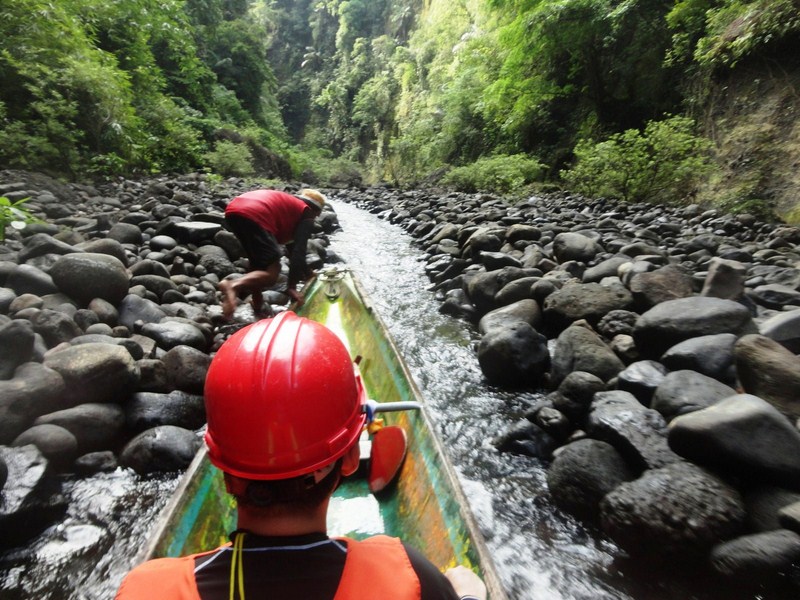
Negotiating the rapids (see video)
At places where the rocks were too many and the water too shallow, our boat slid over steel pipes placed at proper intervals. Along the way, we made a stopover at Talahib Falls in Sitio Talahib, Brgy. Caliraya (Lumban), about 900 m. downstream of Pagsanjan Falls, to admire its natural beauty.
Talahib Falls is also called First Falls while the Pagsanjan Falls is called Main Falls. Before reaching the gorge and Pagsanjan Falls, our boatmen had to to negotiate the extremely deep waters of a broad bend or curve of a river locally called Kawa-Kawa.
The legend of Kawa-Kawa:
According to legend, the muddy bottom of Kawa-Kawa contains a giant bell whose thunderous peals frightened little children and pregnant women many years ago.
The deep, magnificent gorge, hemmed by rocky cliffs 300 foot high, has lush tropical vegetation of vines, wild orchids and ferns. Its huge, natural swimming pool is clean, deep and very cold. The impressive 91-m. high falls is actually a series of five falls, one after the other in magnificent gradation. Two of them are close to each other and the last of the quintet is at the base.
Behind the falls is the dark and mysterious Devil’s Cave or “Cave of the Demons” (so named because of the opening’s devil-like face profile). To get behind the falls, we all boarded a bamboo raft were raftsmen pulled on a series of ropes laid across the lagoon. Once at the far end, we had a glimpse of another cascade on top of the Main Falls. Another rope guided the raft behind and underneath the falls to the Devil’s Cave.
The 5-km./2-hour “shooting the rapids,” the climax of the visit, is the actually the thrilling downstream return trip. Our boat wound through boulders as we passe the 14 relatively safe but roaring rapids of the Bumbungan River.
The bankeros skillfully maneuvered our boats between rocks, alternately using their paddle or their feet. After the last set of rapids, our bancas now joined a convoy towed by a motorized banca back to the Casa Chiesa boat landing.

